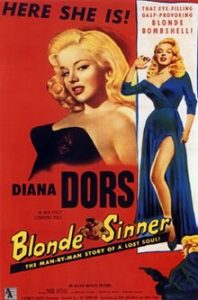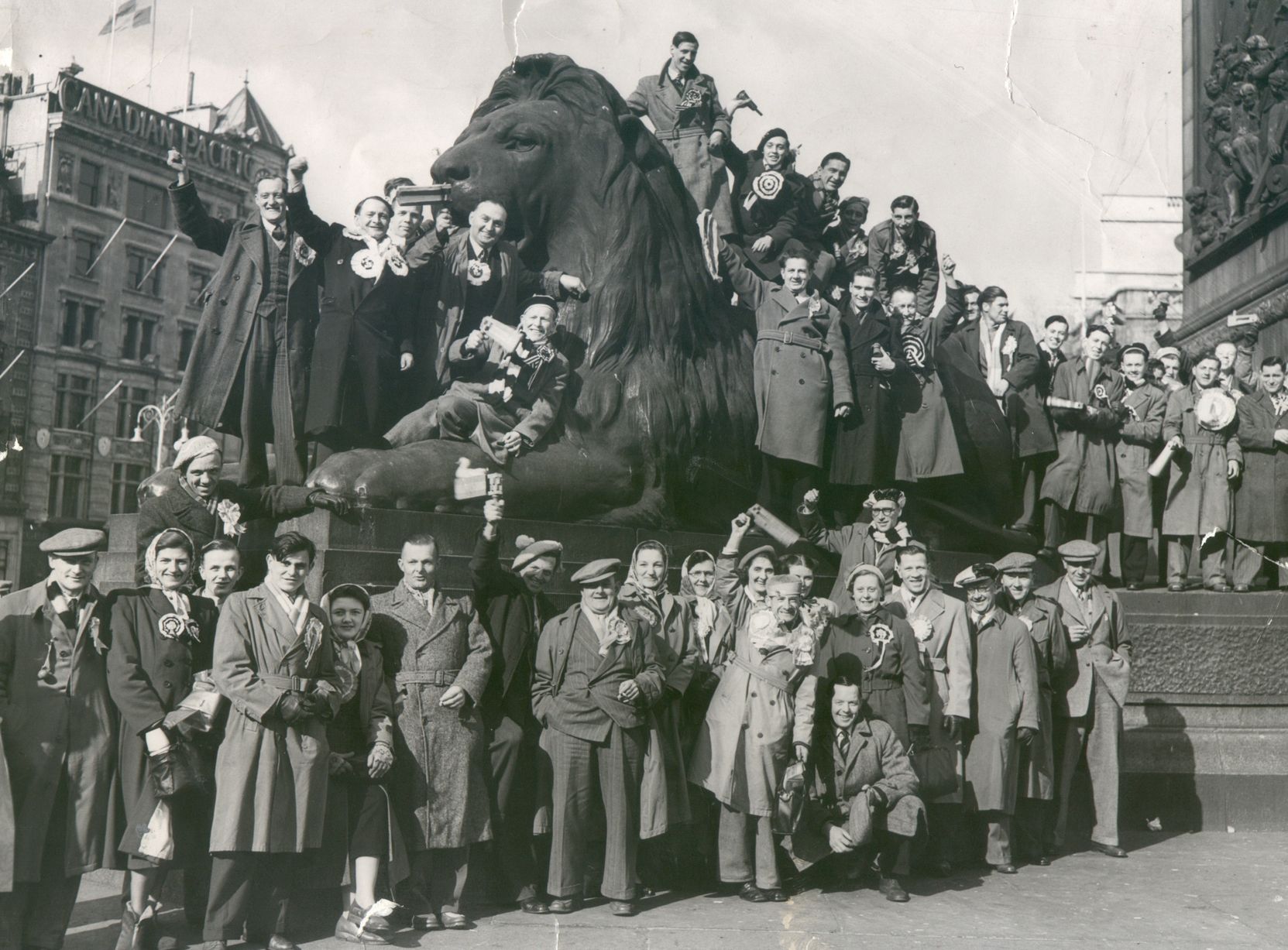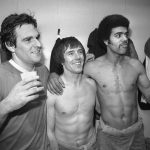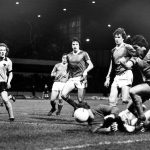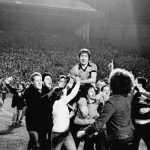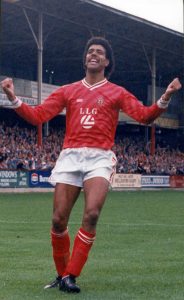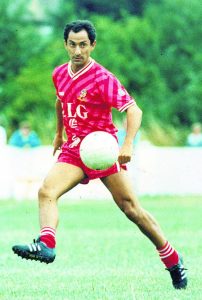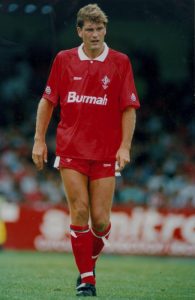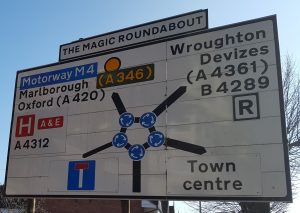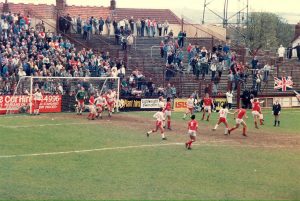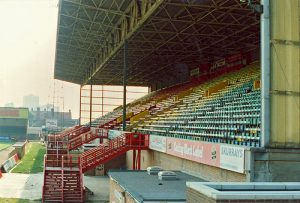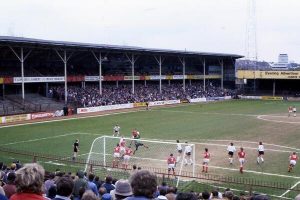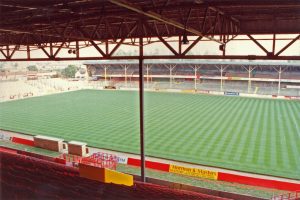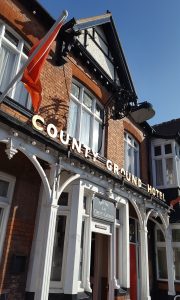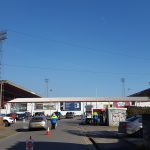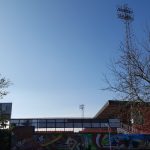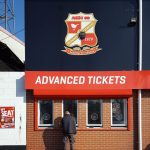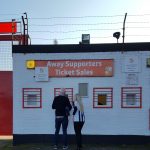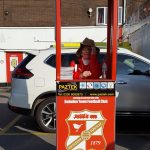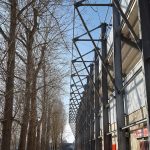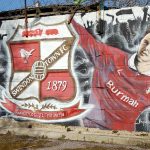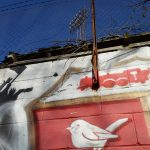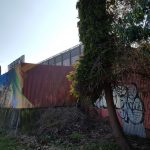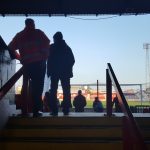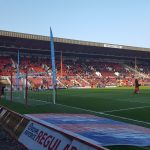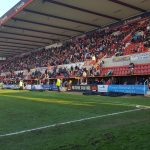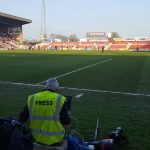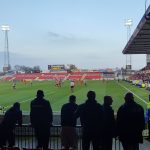Swindon Town 1 Grimsby Town 1
League 2
Saturday 23 February 2019
The context
John’s first visit to the birthplace of Diana Dors (or Diana Fluck as she then was). The last time I went to the County Ground, Kieran nipped out to get a pie midway through a turgid game against Colchester and came back five minutes later having missed three goals. Needless to say that was the scoring over for the day. He still thinks it finished 1-0.
The history
Swindon Town were talked about a lot in my school. Not because anyone was remotely interested in them, but because in 1980 they played Wolves over two legs in the League Cup semi-final. The subsequent win at Wembley – in which a surprised Andy Gray pounced on David Needham and Peter Shilton’s defensive cock-up to score the only goal against Forest – is fondly remembered by those of an old gold persuasion, who have never stopped going on about it since. It seems churlish to point out that the trophy was a small enough return for extravagant spending that nearly bankrupted them, and that their Third Division opponents came pretty close to knocking them out. So I won’t.
- Swindon beat Arsenal
- Joe Allan saves
- Wolves win
- Gray, surprised
On a personal level I have fond memories of a spring day in 1988 when Chris Kamara, having been racially abused by Shrewsbury’s Jim Melrose, waited till the final whistle before felling his tormentor with a right hook so powerful that the big Scot was lifted clean off the ground. “I thought I was being professional leaving it till then”, he said. (The two sets of fans, until that point filing out of Gay Meadow quite amicably, took the resulting fracas as their cue to batter each other with equal enthusiasm along Grafitti Alley and across English Bridge.)
- Chris (Swindon Advertiser)
- Ossie
- Glenn
This was Lou Macari’s Robins side, which two years later won promotion to the First Division under Ossie Ardiles only to be stripped of promotion following a betting scandal dating back to Macari’s time in charge. They did later correct what many perceived as an injustice when Glenn Hoddle’s team reached the Premier League in 1993, but by that stage many of their better players had been snaffled by other clubs and they lasted a single season in the top flight, conceding a hundred goals in the process. They never came remotely close again and have fallen on seriously hard times, sitting mid-table in League 2 at the time of our visit.
The journey
Sometimes, at this time of year, you get an unseasonably hot day that catches people out to the extent that the roads stay quiet and only football fans get to enjoy it. This was that day. Twelve months ago we drove up a snowbound M5 after visiting Ashton Gate. Today the motorway was a joy, and so too was the lazy meander down from Cirencester to a gently basking Swindon. Even the world-famous Magic Roundabout behaved itself, although there remained a suspicion that the cars marooned on the inner part had been stuck there since the last time I was in town.
The ground
A fan from 1980 would have no trouble recognising the County Ground. No fewer than three stands remain in place from the night when Alan Mayes scored a late winner to give Swindon a 2-1 aggregate win in front of 26,000. And one of them, the Stratton Bank, is simply the old uncovered terracing with a few thousand seats bolted on. This only gets used nowadays when the travelling support is big enough to justify it. Which is never.
The Arkells Stand dates from 1971. Back in the day it stood some way back from the pitch, with a big bare space in front – this was because the new (North) stand was built behind an earlier one which was then demolished. (Stands were built in the same way at Prenton Park and Chester’s Sealand Road.) The original wooden seats remain in the visitors’ section at the far end, apart from the hundred or so ripped out by Bristol Rovers fans during a lively encounter in 2006. The paddock was finally seated in the early 90s.
We sat in the Town End – where most of the fans actually stood, possibly in deference to the fact that this too is an old-school terrace with seats added, but most likely because they consider themselves dangerously edgy. The atmosphere was accordingly pretty good, helped by a low roof with a massive overhang. This has always been the Swindon kop, and while the roof is new (the original one dated from 1938) the supports aren’t, and neither is the floodlight pylon that pokes through it.
To our right was a modern stand. This is named after Don Rogers, the goalscorer who inspired Third Division Swindon to their momentous League Cup Final win in 1969 (they beat Arsenal, a feat repeated in 1979 to set up the Wolves semi). It’s nice enough, but not a patch on the structure that used to occupy this touchline. The Shrivenham Road Stand, acquired in 1960, originally stood at the Army parade ground in Aldershot.
The visitor’s terrace was in its far corner, with a section under the overhang and another stretching around onto the Stratton Bank. This part of the ground was the scene of some nasty disorder in the Eighties, when fans of both Bristol City and Rovers tended to regard a trip to Swindon as an ideal opportunity to run amok. The ramshackle old Tattoo Stand provided an ideal playground and plenty of ammunition.
Flesh and wine
Plenty of choices. The supporters’ bar under the Arkells Stand is a friendly place, but the County Ground Hotel has tradition on its side and it was pretty ambient today, with most of the clientele in the beer garden while sun flooded the interior and illuminated a bouncer with nothing to do. It was hard work leaving a comfortable sofa to actually go to the game. Even an awful mobile disco didn’t jar the mood.
I’m a big fan of the battered sausages from the chippy on the roundabout. There was also a massive food van right outside the turnstiles, and a decent canteen under the Town End selling the pasties that are a legal requirement at any ground south of Worcester. Neither is this one of those mean-spirited places where they stop you taking your own food inside. The body searches were zealous, but if you had a burger in one hand and a tray of chips in the other then that was fine with the boys in high-vis.
- front
- back
- home
- away
- his
- hers
- new
- old
- bright
- bird
- star
- Stratton
- town trend
- Town End
- ancient
- modern
- corps
- crew
The game
This pitted a Swindon team on 46 points against a Grimsby side also on 46 points. That’ll be a draw, then. To be fair it wasn’t dull, but for 66 minutes Swindon couldn’t and Grimsby wouldn’t. Then the sending-off of Grimsby’s Ohman for his second yellow card opened things up. Theo Robinson made the breakthrough, scoring for the hosts at the second attempt after McKeown parried his close-range shot. After that it seemed as though the Robins would get more, but the goal energised Grimsby to equalise on the break just two minutes later. There were no second chances for the increasingly flustered home side.
Teams and goals
Swindon: McCormick, Knoyle, Conroy, Broadbent, Koiki, Carroll, McCourt (Dunne 85), Woolery, Bennett (Richards 85), Anderson, Robionson. Unused subs: Henry, Iandolo, Diagouraga, Woolfenden, Bancroft.
Grimsby: McKeown, Davis, Ohman, Collins (Dennis 75), Hendrie, Embleton, Hessenthaler, Woolford (Clifton 59), Ring, Cook (Whitmore 67), Thomas. Unused subs: Hall-Johnson, Cardwell, Vernam, Russell.
Goals: Swindon: Robinson 74 Grimsby: Hendrie 76.
Attendance: 6434
